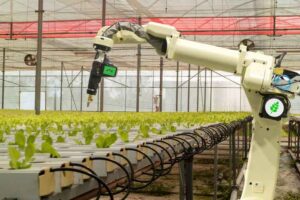Self-Healing Materials for Aerospace Applications

The development of self-healing materials is an exciting frontier in aerospace technology. These innovative materials have the ability to repair damage on their own, without the need for human intervention, potentially revolutionizing the way we think about aircraft maintenance and safety. For the aerospace industry, where material durability and integrity are critical, self-healing materials could drastically reduce maintenance costs, improve safety, and extend the lifespan of aircraft and spacecraft.
At the core of self-healing materials is the ability to respond to damage in much the same way that living organisms heal themselves. When a material is damaged—whether it’s a crack, scratch, or more severe impact—it triggers a chemical or physical process that repairs the affected area. Various mechanisms are used to achieve this self-healing effect, including microcapsules filled with healing agents, dynamic bonding, and reversible chemical reactions.
In aerospace applications, self-healing materials can address a range of challenges. For example, microscopic cracks that form in aircraft components due to fatigue or environmental exposure can lead to catastrophic failures if left unchecked. Traditional maintenance techniques involve regular inspections and repairs, which can be costly and time-consuming. Self-healing materials, on the other hand, could repair these cracks as soon as they appear, preventing them from growing into more significant problems.
The potential applications of self-healing materials in aerospace are vast. From the fuselage and wings of airplanes to the heat shields on spacecraft, these materials can enhance the resilience of critical components. They can also be used in composite materials, which are increasingly common in modern aircraft construction due to their lightweight and strong properties. Self-healing composites can maintain their structural integrity even after damage, reducing the need for frequent repairs and inspections.
Despite the promise of self-healing materials, challenges remain in bringing them to widespread use in aerospace. One of the key hurdles is ensuring that these materials can perform reliably in the extreme conditions encountered in flight, such as high temperatures, pressure fluctuations, and exposure to harsh chemicals. Research is ongoing to develop self-healing materials that can withstand these conditions while maintaining their strength and functionality.
Additionally, the cost of developing and integrating self-healing materials into aerospace systems is a significant factor. While these materials could lead to long-term savings by reducing maintenance and downtime, the initial investment in research, development, and certification is substantial. However, as the technology matures and scales up, these costs are expected to decrease, making self-healing materials more accessible to the aerospace industry.
Incorporating self-healing materials into aerospace applications has the potential to redefine maintenance and durability standards in aviation and space exploration, offering new possibilities for safer, more reliable, and cost-effective operations.
Stay ahead with ITBusinessNews – Your trusted source for Technology and Business news. Fast & Precise




